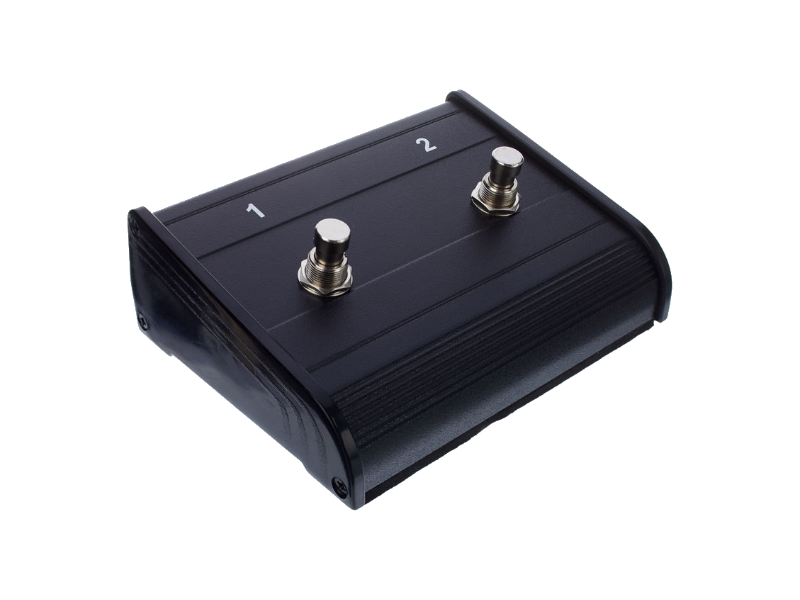The switching process with footswitches connected to the footswitch socket of the AMP1 is carried out by measuring the voltage at this socket. Footswitches without LEDs always work. A footswitch with an LED without an internal series resistor also works. In the case of footswitches with LEDs, however, the series resistor can be so large that the voltage drop is not sufficient to trigger the switching process.
We know that the following footswitches work reliably:
Delete
By the way: If you use a 2-way footswitch with LEDs and switch the AMP1's BOOST with the right switch, the footswitch's LED does not tell you if the AMP1's BOOST is on or off... rather, it indicates the switching state of the footswitch. This can match the switching state of the BOOST, but it doesn't have to.
If, for example, "BOOST on" is stored in a preset, the BOOST is activated when this preset is called up via one of the three internal footswitches of the AMP1 - regardless of the switching status of the external footswitch. If the external footswitch is set to OFF at this moment, the footswitch LED will not light up, although the BOOST is active. When the footswitch is pressed, it changes to ON and the LED lights up - but the BOOST of the AMP1 is deactivated. So take care if you're operating a setup like this one!

